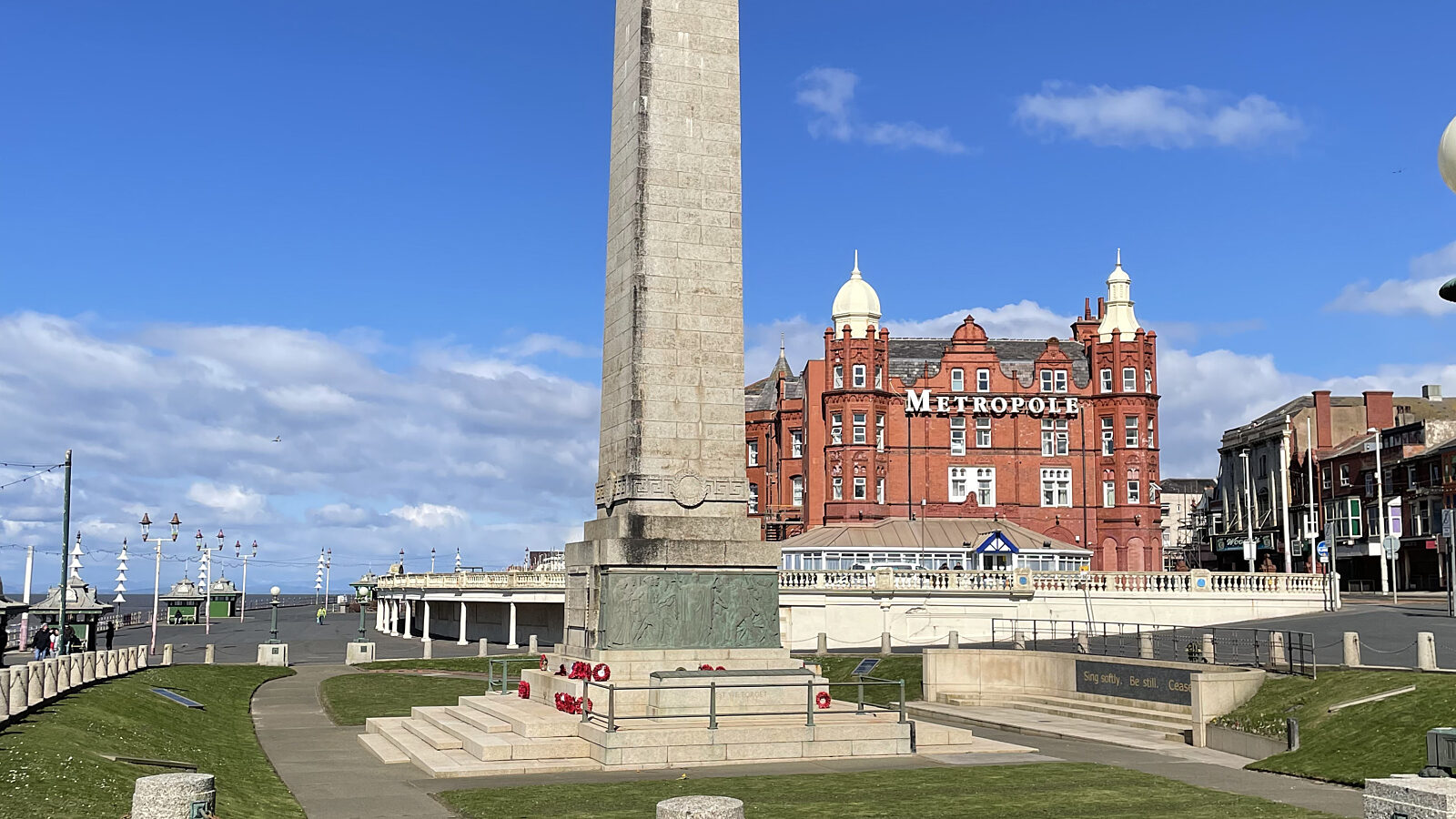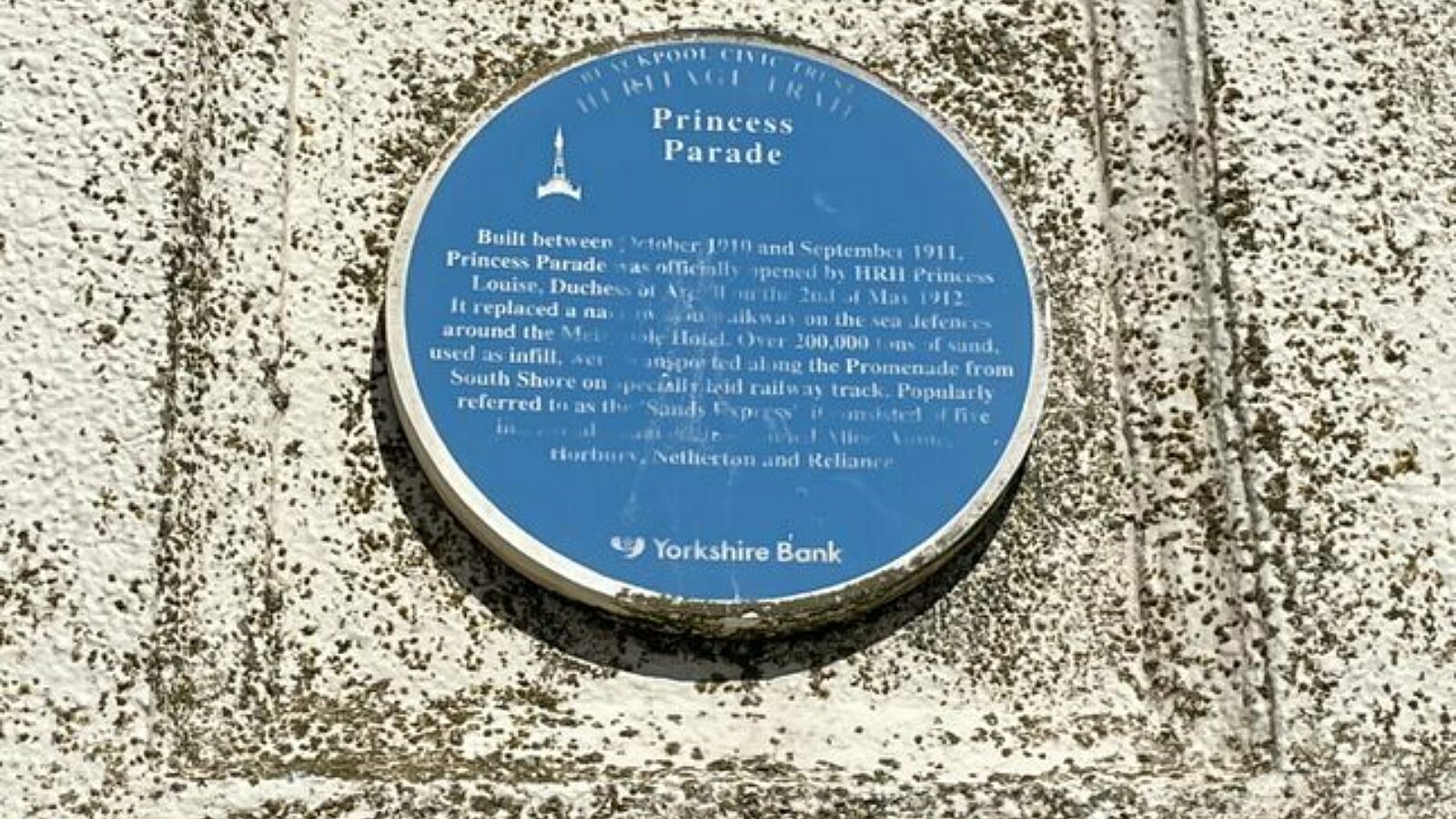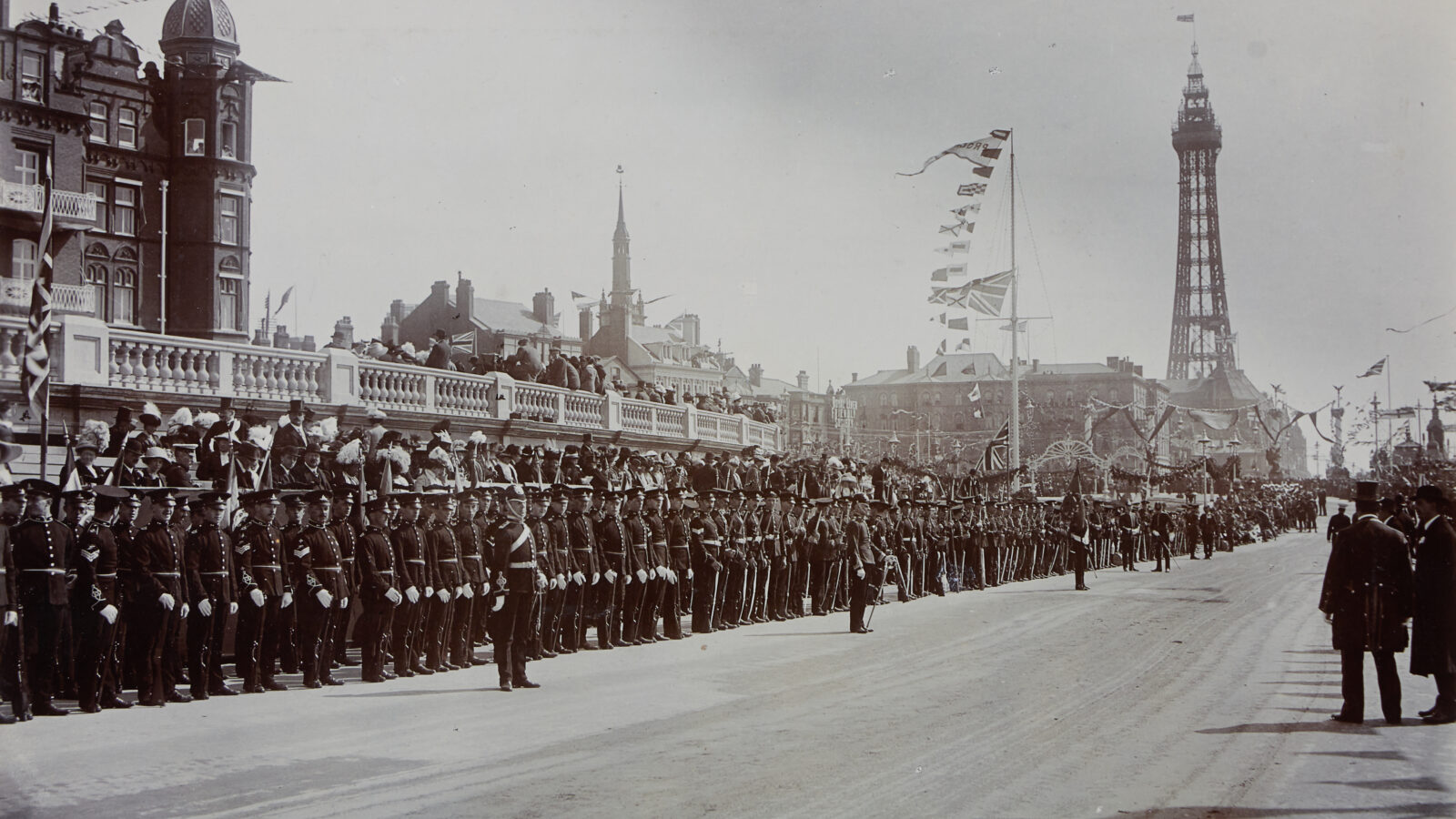
The Opening of Princess Parade - 2nd May 1912
We are a group of History students from the University of Central Lancashire with a special interest in local heritage. Earlier this year we were asked by the heritage team for Blackpool Council to produce a podcast for the historic 110th Anniversary of Blackpool’s first royal visit and opening of the Princess Parade, which was named after Blackpool’s royal visitor, Princess Louise. Not only was the opening day an immensely memorable day for the town, it also marked the beginning of the Blackpool illuminations as we know it today.
For a century before the construction of the Princess Parade, Blackpool had steadily grown from a small fishing village into a thriving town of nearly 60,000 people. The town’s development was due to the growth of recreational tourism during the Victorian era, as walking in Blackpool’s fresh sea air was known to be wonderful for your health. The beautiful views over the Irish sea also provided a welcomed escape from the cramped and grimy industrial cities of the industrial revolution. Steam trains brought many thousands of eager visitors from the nearby industrial towns and cities like Manchester and Liverpool, who flocked to the sea front to catch some of the fresh sea air.
To keep up with this rapidly increasing demand the town council decided to add a new section to the promenade, which would protect Blackpool’s front from the tide but more importantly provide a leisurely area where visitors could stroll and relax. The new section was to be around the Metropole Hotel extending from North Pier to Cocker Square.
To construct this the town council first called in revered engineer John Shanks Brodie who designed a 174m retaining wall to strengthen the front’s sea defences. On top of this sea wall, Brodie constructed a colonnade which was built with state-of-the-art reinforced concrete, which was a technique still in its infancy at the time. The Colonnade was designed in a European style similar in style to the sea fronts of Mediterranean towns. Brodie’s design must have worked, as when the Princess first saw the new parade through the window of her suite in the Hotel Metropole, she is said to have remarked that the attraction reminded her of the ones she had seen on the European continent.
After the colonnade was built the area between the new colonnade and the sea front had to be filled in and brought up to the level of the sea wall, to do this Brodie needed a lot of sand, a quarter of a million tons in fact! The sand was to be taken from South Shore via a steam engine on a temporary railway all the way up to North Pier, almost 2 miles!
To move this amount of sand several options were considered, the traditional method of horse and cart was the first idea to be considered but it would be too expensive and would take a long time to lug such a massive amount of sand. The second idea was to use the existing tramway, but this was eventually decided against as the massive weight of all that sand would have put too much strain on the track and would have damaged it. Then a third option was considered, to build a light industrial steamway to lug all that heavy sand, immediately the engineers agreed that this would be the best option to do the job, and so the Sand Express was born.
The first engines to arrive were known as the Netherton and the Horbury, they were filled by hand by a team of 80 men who loaded the wagons which were then pulled to the parade where the sand was tipped out to fill the hole.
Halfway through, the project began to encounter problems when bad coal caused the engines to run slower than they otherwise would. The engineers added another engine which was dubbed Reliance due to its regular habit of breaking down and derailing, which delayed the project further. Bad weather also delayed the project and made the conditions much harder for the navvies. These delays meant that the workers had to work harder to compensate for the lost time, but because of their effort in the bad weather conditions they wanted more money, and so they went on strike for better pay, which further delayed the work effort.
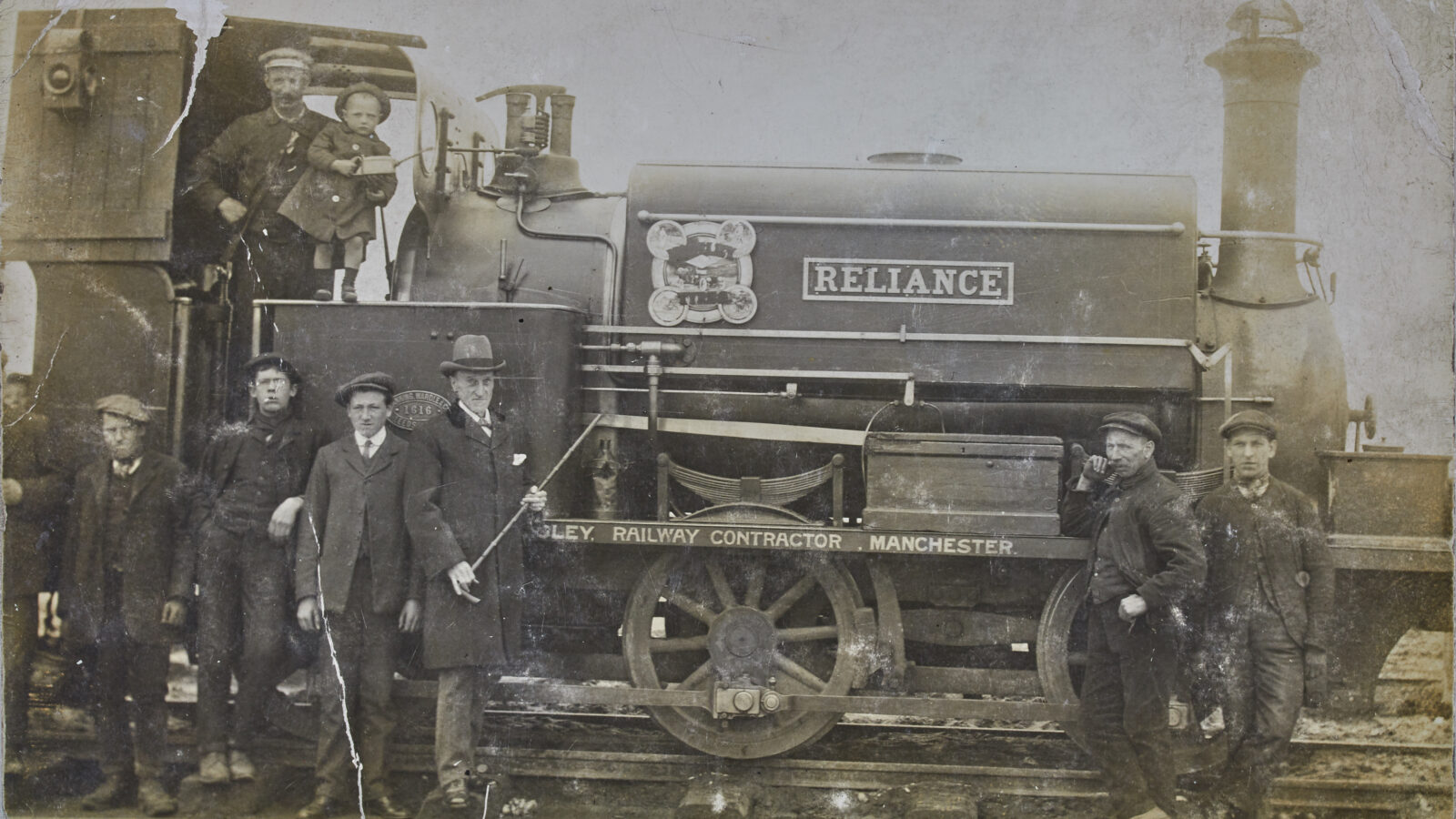
As the May deadline loomed Brodie worried whether the parade would be ready for the Princess’s arrival. By the end of March, the situation was looking desperate so to help out, a fourth engine Annie was added.
Annie proved to be more reliable than Reliance and so the pace of the work began to pick up. As the May deadline loomed, another engine Alice was added to the work effort. Luckily by working around the clock, the better paid workers with their fleet of five steam engines made up for the lost time, and the promenade was completed just in time for the eagerly awaited opening by Princess Louise on 2nd May 1912.
Blackpool was at her best the day the Princess visited. The sun shone bright and the flags and bunting which had been especially laid out for her arrival fluttered fully in the breeze. Thousands of people had poured into Blackpool from the surrounding towns and cities for the special event. Within the crowded streets there was a fantastic holiday spirit as people cheered and eagerly waited to catch a glimpse of their Princess.
On the new parade a royal box had been especially built for Princess Louise and her husband, the Duke of Argyll, the box was decorated in all different types of bright exotic plants from all over the world. The Lifeboat Band played cheerful anthems, while opposite the royal box, all manner of different military regiments took their positions along with Boy Scout and Girls guides groups, nursing divisions. Their bright uniforms are said to have stood out in the bright spring sunshine, alongside the 2,400 school children who were especially dressed in white and blue.
The Princess and Duke, along with the Mayor and Mayoress of Blackpool boarded a horse drawn carriage and then travelled from the town hall to the Princess Parade. The crowds cheered thunderously as they made their way aboard their royal carriage from the town hall through the packed streets, to the new Parade. As they reached the Parade the Lifeboat Band struck up the National Anthem to herald their arrival and they were met with a wave of cheers by the thrilled crowds.
The carriage stopped at the royal box where the Princess was helped off by the Mayor and onto the stage. Then a Blackpool schoolgirl, Miss Ashley presented the Princess with a bouquet of crimson roses, the Princess is said to have been delighted with the flowers and as she smiled and thanked the young schoolgirl the crowd is supposed to have let out a collective sigh of affection.
The Princess was then asked by the Mayor to open the Parade to which she proclaimed, ‘I declare this promenade open!’ and cut the rope. Then the crowd erupted into three cheers which carried down the promenade off into the distance.
Then the Princess, the Duke and the Mayor and his wife boarded the carriage and were taken around the new parade past the school children who sang the traditional songs, ‘now pray we for our country’, ‘auld land syne’ and the National Anthem to which the crowd spontaneously joined in.
Both the Princess and the Duke are said to have had a fantastic time in the town and were incredibly impressed by the town’s growth and its representation at the forefront of British resorts.
The visit by royalty meant that the dream of a lifetime had come true for the town and with this crowning distinction Blackpool could completely take her rightful place as the world’s premier seaside resort.
The Blackpool Herald reported that ‘record crowds had taken part’ in the opening of the new parade, with around 100,000 people thought to have come to Blackpool, that’s nearly double the population of the town at that time! Nearby Fleetwood was reported to be like a ghost town, as all the towns’ people flocked to Blackpool to witness this historic event. Certainly, those people would never forget the special events of that day, when royalty came to visit.

The night of the opening, bright lights shone on the parade in a fairyland of colour. Like the town itself, the lights were ground-breaking for their time as they were made up of twelve thousand colourful electric lights, electric lighting of course was only just being introduced for normal streetlights in many parts of England.
Around the Hotel Metropole where the Princess had stayed, the lights spelled out, ‘Welcome to Blackpool’ this was topped with a crown and large star, the perfect icon for a princess. At the entrance to the tower there was a design of a rose, shamrock and a crown which said, ‘Welcome to our Princess.’ The crowning glory among this blaze of electric light and the one which drew the most crowds was an eighty foot ‘yacht’ under full sail, a proud nod to one of Blackpool’s maritime recreational activities.
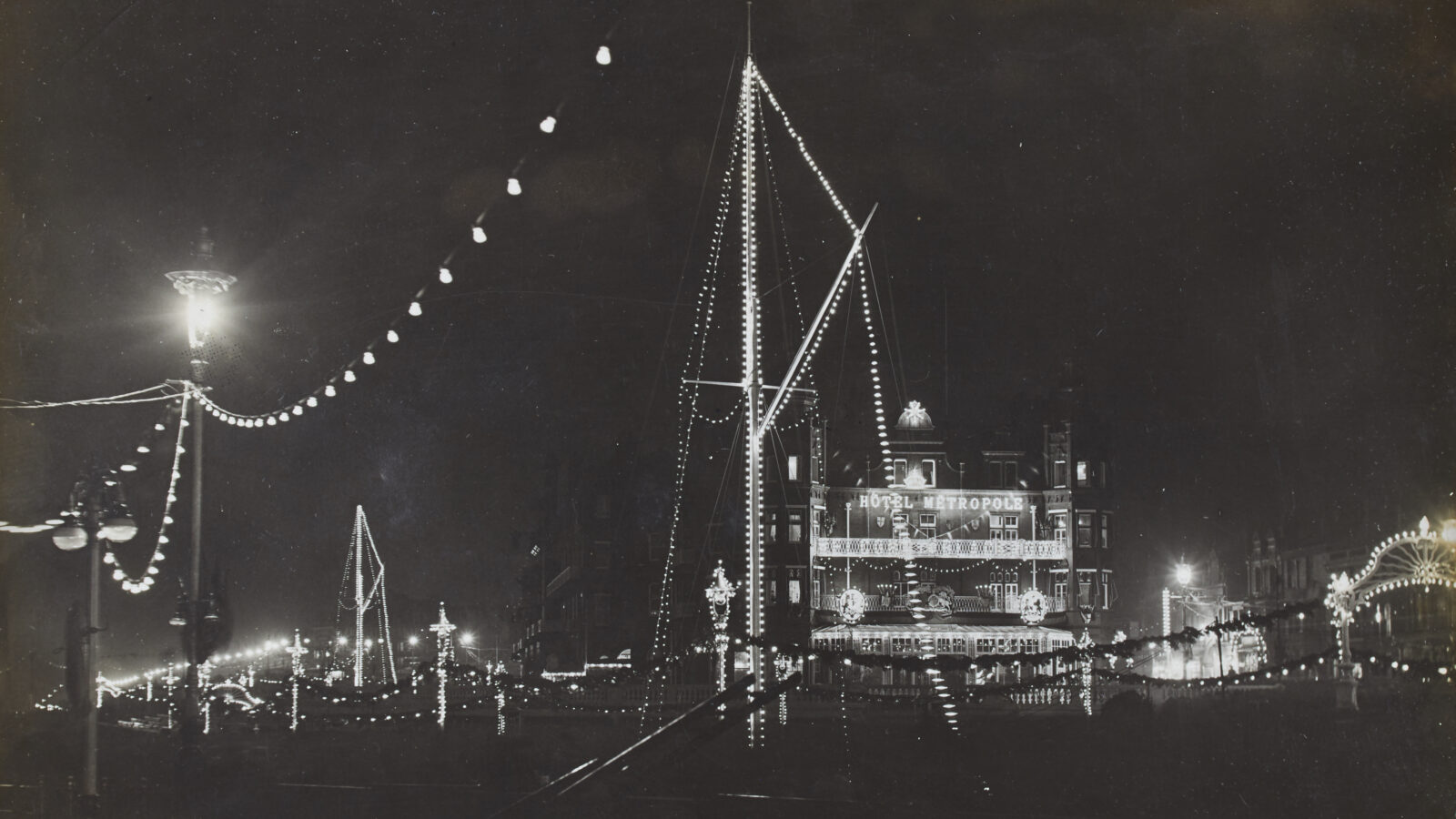
All the trams coming to witness the illuminations were packed, and thousands more came from all around Lancashire to come and gaze in amazement at the lights. As those people went home and told friends and relatives of what they had seen in Blackpool more and more people continued to come and word spread of these ‘illuminations.’
The illuminations were so popular that the council decided to continue them and expand them year on year, after a century since they first appeared millions of people have come to Blackpool to see the famous lights. The illuminations have become such a beloved British institution, that to many they are almost as treasured as royalty.
If you enjoyed our blog and want to hear more about this unique and exciting event in Blackpool’s past. Follow the link below to listen to our podcast especially written and presented by us History students from the University of Central Lancashire.
UCLan Podcast - the opening of Princess Parade - 2nd May 1912
